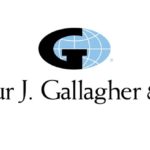West Texas Intermediate and Brent crude extended hefty overnight gains as news of deeper capex cuts by oil companies fueled speculations a global supply glut that sent prices tumbling by almost 50% last year will be curbed. A softer US dollar also benefited the market.
US crude for delivery in March rose 1.29% to $51.87 per barrel by 8:18 GMT, having shifted in a daily range of $52.09-$51.03 a barrel. The contract rose 4.85% to $51.21 a barrel on Thursday, the most in a week and a half, and is up almost 0.7% for the week so far.
Meanwhile on the ICE, Brent for settlement in April was up 1.16% at $59.97 a barrel, varying in a daily range of $60.40-$59.08. The European benchmark crude surged 6% on Thursday to $59.28 per barrel and is up 3% for the week so far.
Baker Hughes Inc. reported last Friday that US explorers idled 83 rigs last week, bringing their total number to 1 140, the lowest since December 2011. Their count has dropped by a record 435 in nine weeks.
Apache Corp, a top U.S. shale oil producer, announced it will slash the number of its oil-drilling rigs by 70%. French energy major Total SA followed companies including BP Plc and Royal Dutch Shell into slashing spending and curbing exploration this year. Total will cut investments to $23-$24 billion from $26 billion last year, while exploration expenditure will be sliced by 30% to about $1.9 billion.
Meanwhile, Shells chief executive Ben van Beurden warned that a recovery in demand might cause a supply deficit as companies slash budgets.
The drop in active oil rigs and reduced investment budgets managed to offset continuously rising US crude supplies and output in recent weeks, although both the International Energy Agency and the Energy Information Administration painted a dark picture for the oil market.
The EIA reported on Wednesday that US crude oil inventories rose to 417.9 million barrels in the seven days through February 6th, the highest level for this time of the year in more than 80 years, while supplies at the Cushing, Oklahoma, storage hub increased to 42.6 million barrels from 41.4 million a week earlier, the most in a year. Domestic crude output surged 49 000 barrels per day to 9.226 million bpd, the highest for weekly statistics dating back to January 1983.
The government agency kept its 2015 and 2016 domestic crude output outlook mostly unchanged from the previous month, with the agency projecting this year’s production pace to surge to 9.30 million bpd, the most since 1972.
Meanwhile, Goldman Sachs joined Citigroup Inc. and Vitol Group in predicting the market may resume a drop as global oil output growth continues to outpace demand.
The International Energy Agency said this week that growth in US shale oil output “is expected to regain momentum in the latter part of the forecast period as prices recover, and North America remains a top source of supply growth for the remainder of the decade.”
OPEC prices
OPEC said in a report earlier this week that producers outside the group are expected to pump around 400 000 barrels per day of crude less than previously expected, the biggest downward revision since at least 2008, as low prices force US producers to scale back output.
The group also saw higher demand than previously estimated for its own crude this year as a result of slowing non-OPEC production growth. The group will supply 29.2 million barrels per day in 2015, which however still exceeds the current output pace by around 1 million bpd and compares to its collective target of 30.0 million bpd.
Iraq, Iran and Kuwait followed Saudi Arabia into cutting their March crude prices to Asia. Iraq’s Basrah Light crude saw its discount to Middle East benchmarks widened to $4.10, the Oil Marketing Co. said Tuesday, while National Iranian Oil Co. cut its selling price for March Light crude to a discount of $2.10 a barrel, the lowest in around 15 years.
Better-than-expected economic growth in leading EU economy Germany also fanned positive sentiment. Preliminary data showed that the German economy expanded by an annualized 1.6% in the fourth quarter, compared to projections for a slowdown to 1.0% from 1.2% in the three months through September. Analysts now eyed Eurozone GDP growth figures, due at 10:00 GMT, as well as the preliminary Michigan Consumer Confidence later in the day to gauge demand prospects.
Pivot points
According to Binary Tribune’s daily analysis, West Texas Intermediate March futures’ central pivot point is at $50.65. In case the contract breaches the first resistance level at $52.16, it may rise to $53.11. Should the second key resistance be broken, the US benchmark may attempt to advance $54.62.
If the contract manages to breach the first key support at $49.70, it might come to test $48.19. With this second support broken, movement to the downside could continue to $47.24.
Meanwhile, April’s central pivot point is projected at $58.42. The contract will see its first resistance level at $60.77. If breached, it may rise and test $62.26. In case the second key resistance is broken, the European crude benchmark may attempt to advance $64.61.
If Brent manages to penetrate the S1 level at $56.93, it could continue down to test $54.58. With the second support broken, downside movement may extend to $53.09 per barrel.





